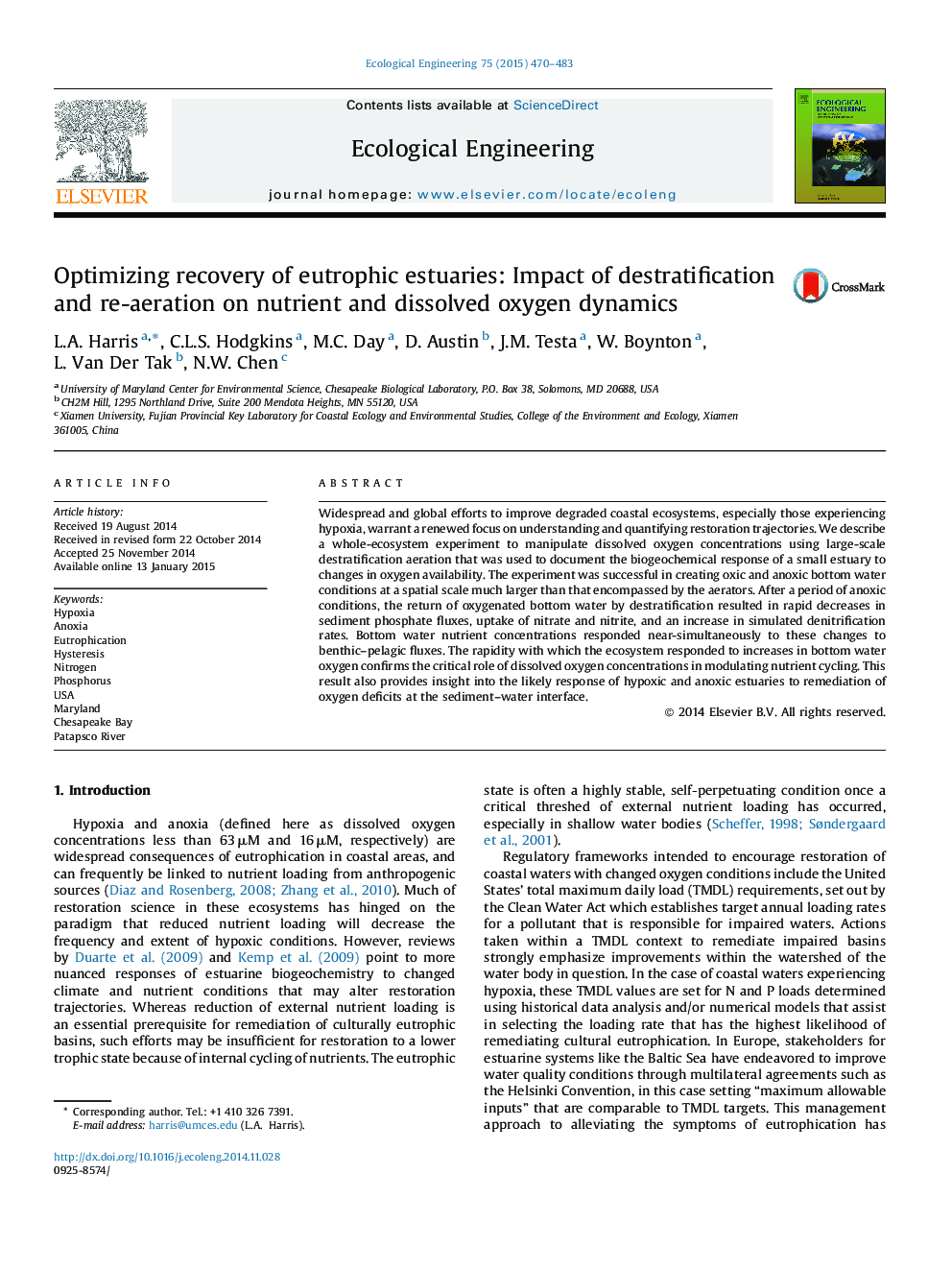| Article ID | Journal | Published Year | Pages | File Type |
|---|---|---|---|---|
| 6301786 | Ecological Engineering | 2015 | 14 Pages |
Widespread and global efforts to improve degraded coastal ecosystems, especially those experiencing hypoxia, warrant a renewed focus on understanding and quantifying restoration trajectories. We describe a whole-ecosystem experiment to manipulate dissolved oxygen concentrations using large-scale destratification aeration that was used to document the biogeochemical response of a small estuary to changes in oxygen availability. The experiment was successful in creating oxic and anoxic bottom water conditions at a spatial scale much larger than that encompassed by the aerators. After a period of anoxic conditions, the return of oxygenated bottom water by destratification resulted in rapid decreases in sediment phosphate fluxes, uptake of nitrate and nitrite, and an increase in simulated denitrification rates. Bottom water nutrient concentrations responded near-simultaneously to these changes to benthic-pelagic fluxes. The rapidity with which the ecosystem responded to increases in bottom water oxygen confirms the critical role of dissolved oxygen concentrations in modulating nutrient cycling. This result also provides insight into the likely response of hypoxic and anoxic estuaries to remediation of oxygen deficits at the sediment-water interface.
Graphical abstractDownload full-size image
